
Brain Tumor Extraction From Mri Images Using Matlab Images Poster
Extract brain and perform skull removal on brain MRI data semi-automatically. Manual Image Masks. MATLAB's image processing toolbox provides a variety of tool for manually selecting an image ROI.. MATLAB image processing toolbox provides useful fucntions for automating ROI selection in MRI images. In this section, we are going to utilize.
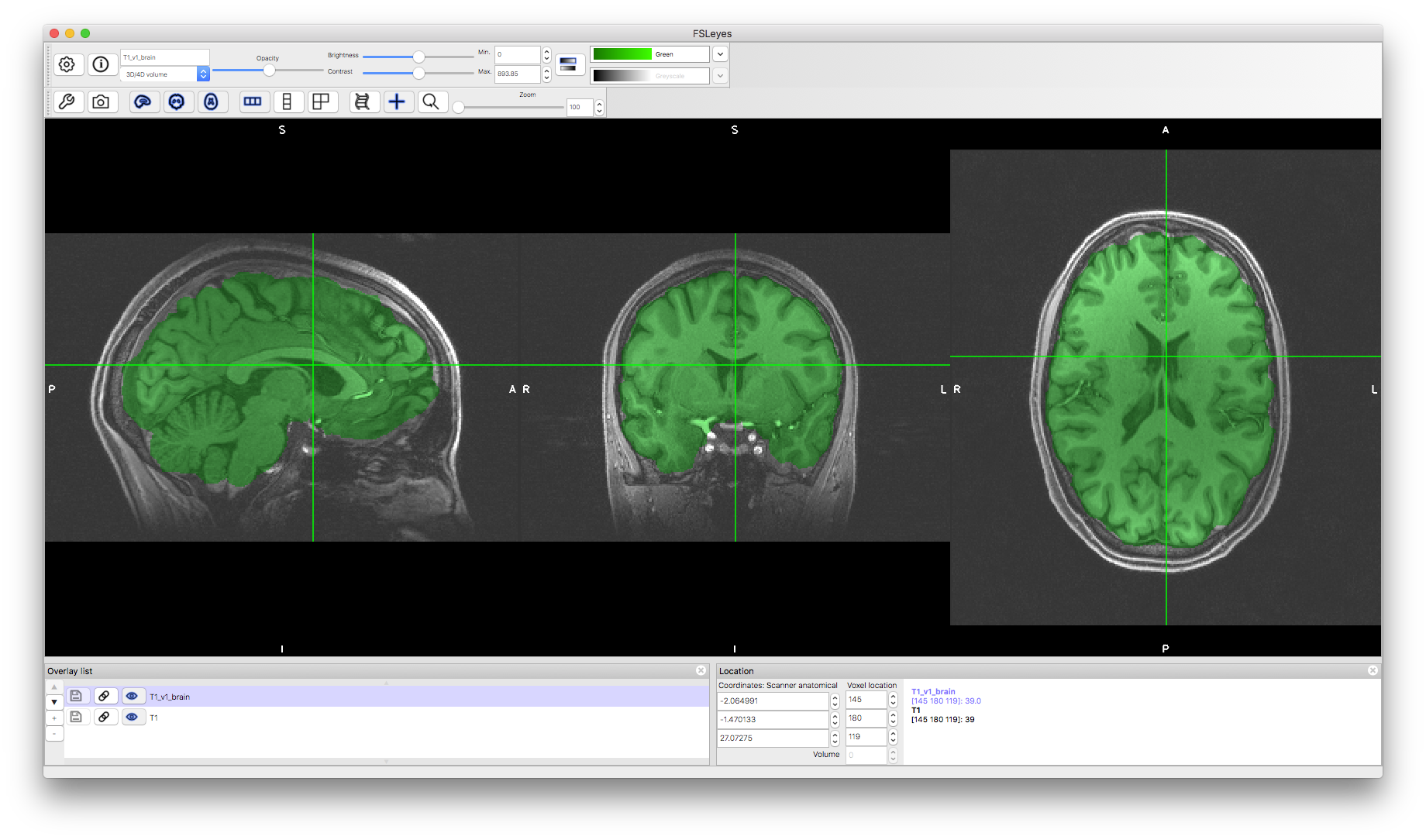
Section 4.2 Example Box
The contour evolution tool is implemented in Matlab (MATLAB, 2010) and is also publicly available to researchers. Therefore, despite the recent progress in CT brain extraction, it is still challenging for a prospective researcher to distinguish the differences in performance of these tools and gauge the generalisability of these existing.
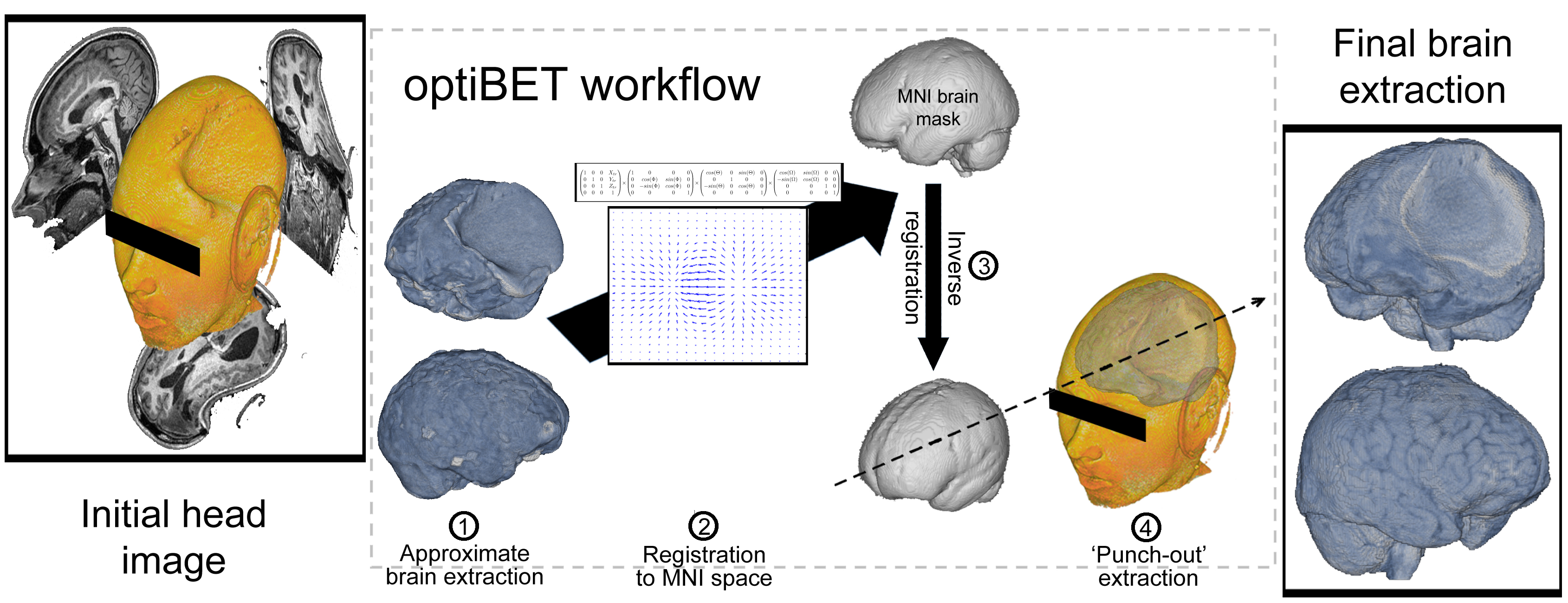
optiBET optimized brain extraction script for patient brain Professor Martin Monti's lab website
Brain_extraction_tools. Brain extraction MATLAB functions that use the FMRIB, NIfTI and BRIClib libraries. About. Brain extraction MATLAB functions that use the FMRIB, NIfTI and BRIClib libraries Resources. Readme License. GPL-3.0 license Stars. 1 star Watchers. 1 watching Forks. 1 fork Report repository

(PDF) Brain Tumor Extraction from MRI Images Using MATLAB
A matlab-based code for skull stripping on infant and adult MR images. Please refer to below papers for details: "LABEL: Pediatric Brain Extraction Using Learning-based Meta-algorithm", Neuroimage 62 (3):1975-1986, Sep. 2012. [Feng Shi, Li Wang, Yakang Dai, John H Gilmore, Weili Lin, Dinggang Shen] Execution Options Download Now: See All Files

How to use the brain extraction tool
BET (Brain Extraction Tool) deletes non-brain tissue from an image of the whole head. It can also estimate the inner and outer skull surfaces, and outer scalp surface, if you have good quality T1 and T2 input images. If you use BET, please make sure that you quote the following reference in any publications: S.M. Smith.

How to use the brain extraction tool
Brain extraction from CT and CTA images - File Exchange - MATLAB Central Brain extraction from CT and CTA images Version 1.0.0 (5.27 MB) by Wu Qiu Extract brain from CT and CTA images https://github.com/WuChanada/StripSkullCT 0.0 (0) 200 Downloads Updated 3 Jul 2023 From GitHub View License on GitHub Download Overview Functions Version History
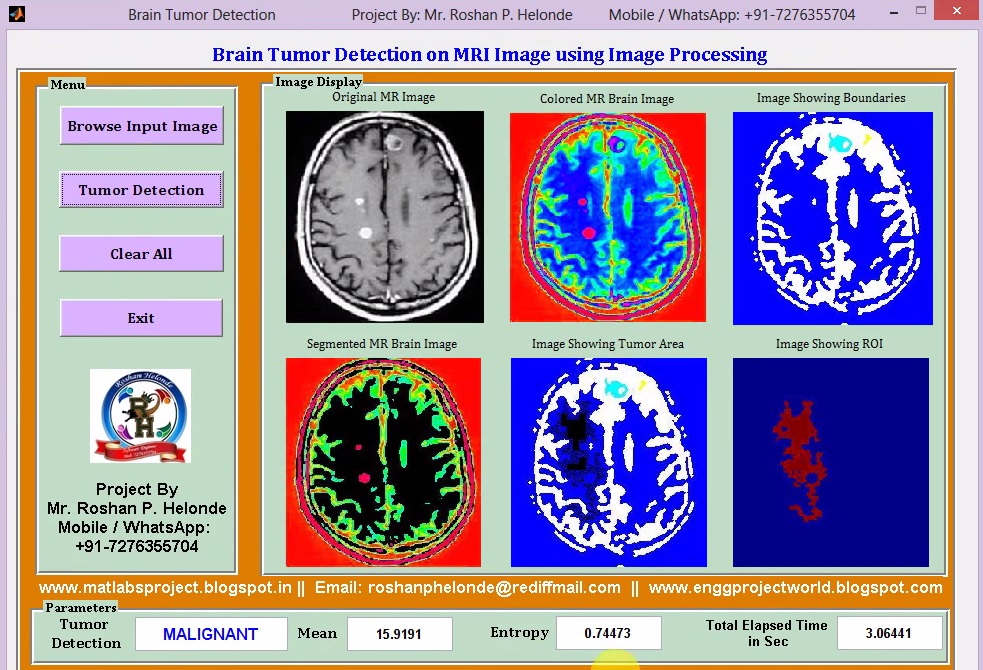
Matlab Code for Brain Tumor Detection on MRI Images Using Image Processing Matlabs Code
The Brain Dynamics Toolbox provides an interactive simulation platform for exploring such systems in Matlab. It supports the major classes of differential equations that arise in computational neuroscience: Ordinary Differential Equations, Delay Differential Equations and Stochastic Differential Equations. The design of the graphical interface.
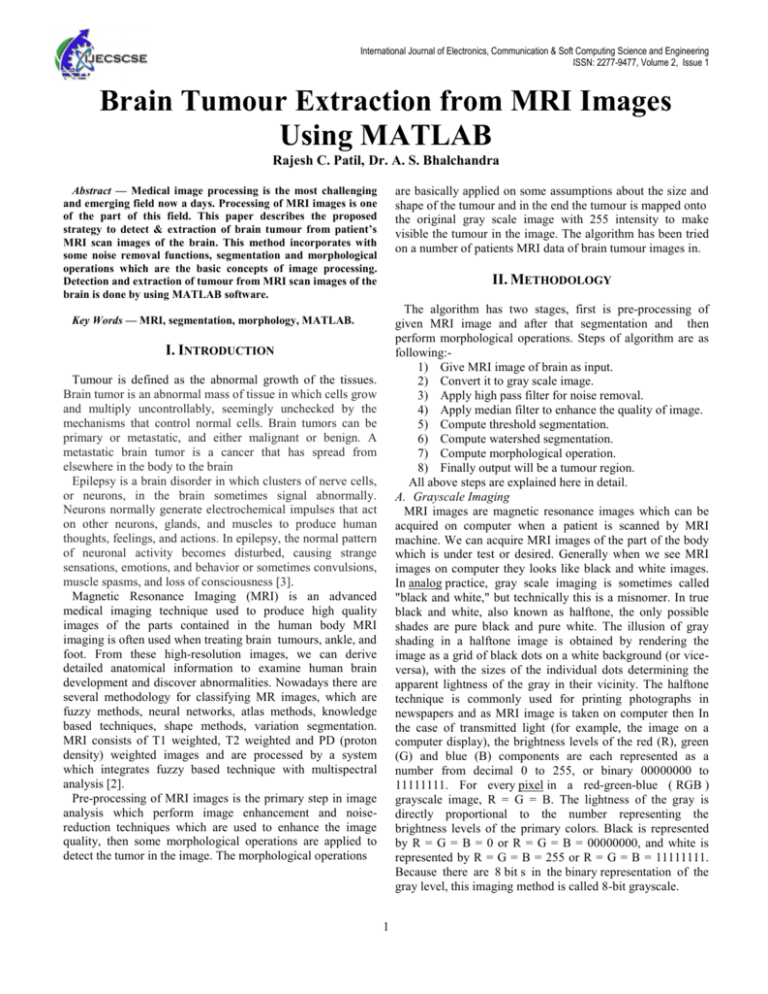
Brain Tumour Extraction from MRI Images Using MATLAB
1 Link Muhammad, I use a program known as AFNI for such skull stripping. AFNI has been developed by the National Institute of Health (NIH) AFNI can be found here for download (it's free- http://afni.nimh.nih.gov/afni) and the part used for skull stripping is called 3dSkullStrip http://afni.nimh.nih.gov/pub/dist/doc/program_help/3dSkullStrip.html

Brain extraction tool (BEt), used to extract the brain and skull from... Download Scientific
betsurf betsurf is the program that produces the three additional surfaces (inner & outer skull, outer scalp). It can output these surfaces as filled-in binary mask images, surface-only binary mask images and Geomview mesh format files. betsurf requires ideally good resolution T1- and T2-weighted input images.

Brain Tumor Extraction From Mri Images Using Matlab Images Poster
The output structure is inspired by the Brain Imaging Data Structure (BIDS) to facilitate transparent and reproducible data communication. Results: We have developed an open-source and widely adopted toolbox for the extraction and analysis of Medtronic Percept research data with a single Matlab command. Automatic preprocessing performs metadata.

Brain segmentation obtained with the Brain Extraction Tool (BET) from... Download Scientific
SEPIA is a pipeline analysis tool for quantitative susceptibility mapping (QSM) in Brain Imaging. It provides all the essential functions people would need to compute a susceptibility map from a 3D multi-echo GRE phase data, including phase unwrapping, background field contribution removal and dipole inversion.

Matlab Project for Brain Tumor Detection Using Watershed Segmentation Methods YouTube
We benchmarked four state-of-the-art rodent brain extraction methods, Rodent Brain Extraction Tool (RBET) (Wood et al. 2013), three dimensional pulse coupled neural networks. MSER was implemented by calling the MATLAB interface of the VLFeat package (version: 0.9.20).

I want to extract skull from Brain MRI usinG MORPHOLOGICAL OPERATIONS . But i didnt get a useful
Command line tools for performing cortical surface extraction, surface/volume registration, and processing of diffusion weighted images Ability to create and use custom brain atlases . Compiled MATLAB code now uses MATLAB R2019b Matlab Compiler Runtime, which provides improved compatibility with more recent versions of Mac OS X.
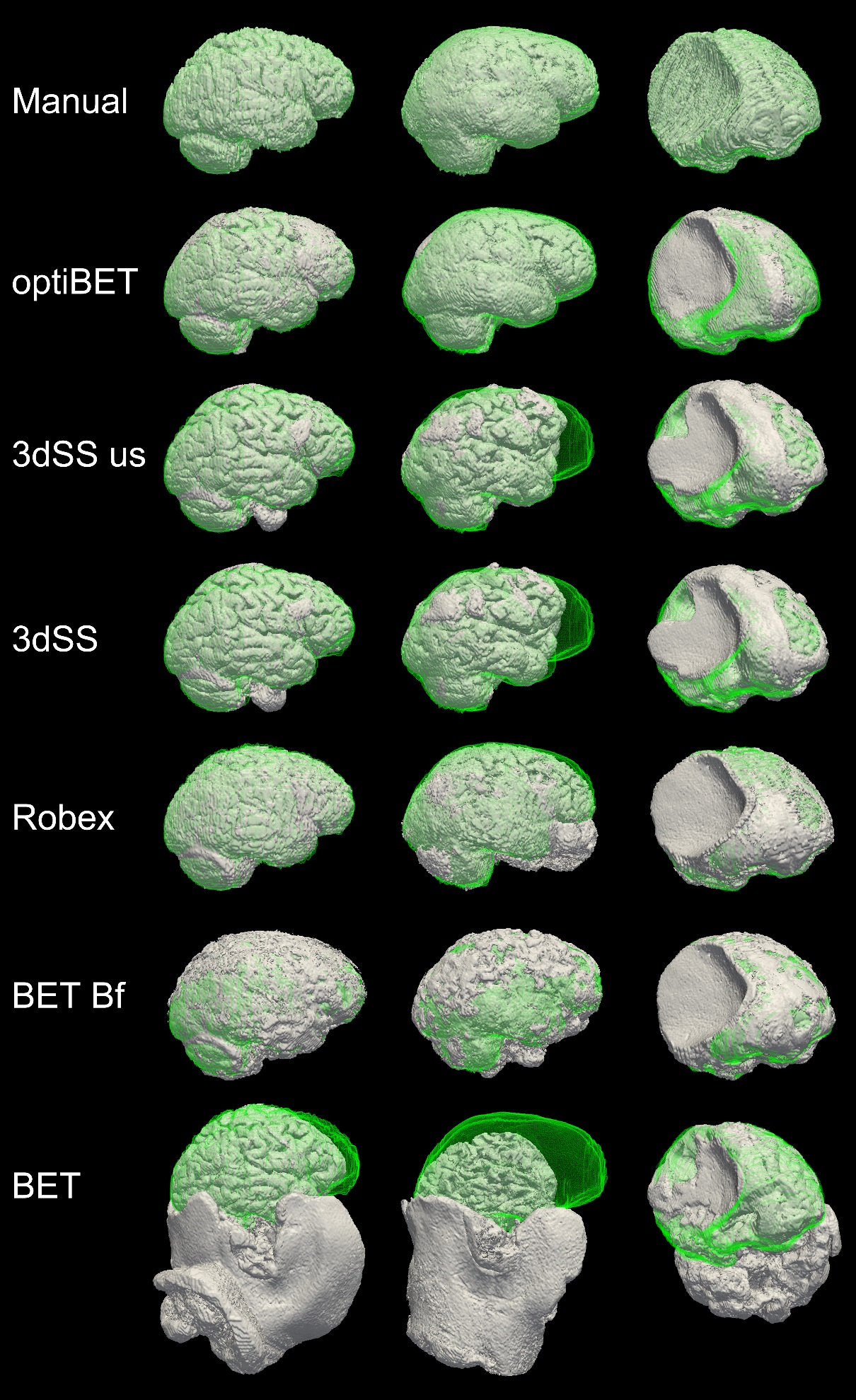
optiBET optimized brain extraction script for patient brain Professor Martin Monti's lab website
The problem is that I am still a beginner with MATLAB, and the automatic segmentation does not allow me to have only the supratentorial part. So I don't know if there are other functions that allow me to segment the brain and have only the supratentorial part, to use it later as a mask to calculate the perfusion.

Figure 4.1 from Brain Tumor Extraction Using Matlab Semantic Scholar
Brain extraction, also known as skull stripping, is a preliminary image post-processing technique that is fundamental for multiple applications in neuroscience and quantitative image analysis.

Rat Brain Extraction from T1 MRI using Matlab Image Processing YouTube
The contour evolution tool is implemented in Matlab (MATLAB, 2010) and is also publicly available to researchers. Therefore, despite the recent progress in CT brain extraction, it is still challenging for a prospective researcher to distinguish the differences in performance of these tools and gauge the generalisability of these existing.